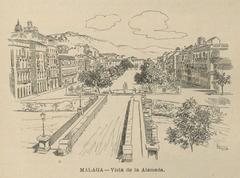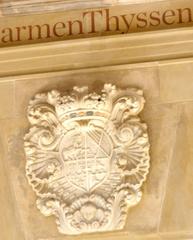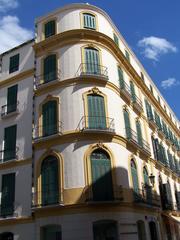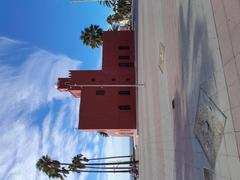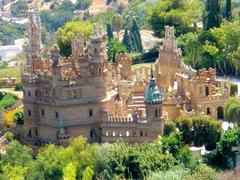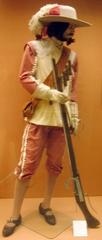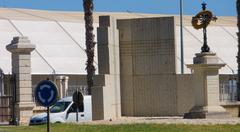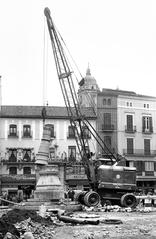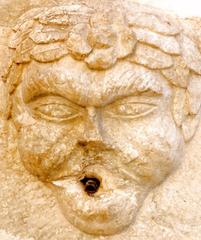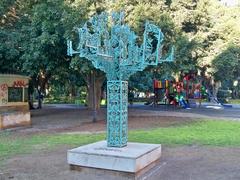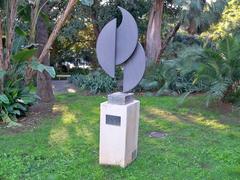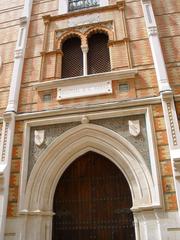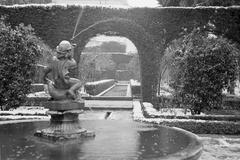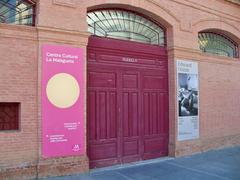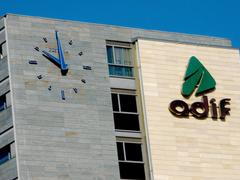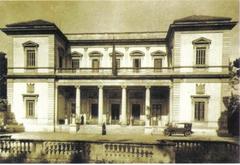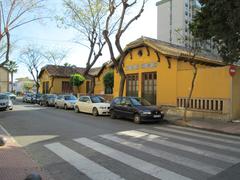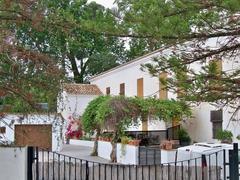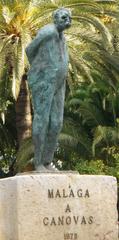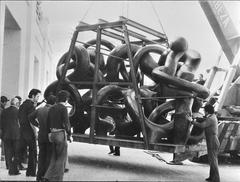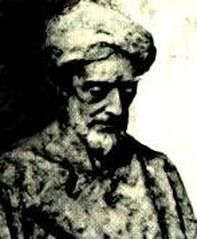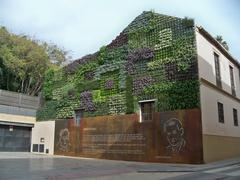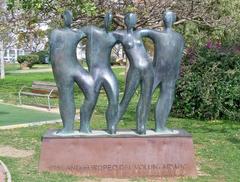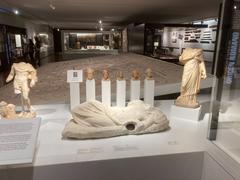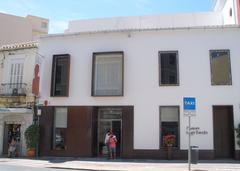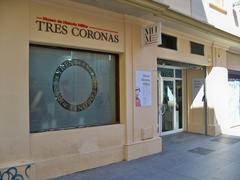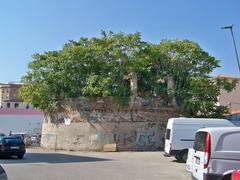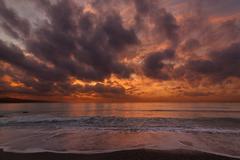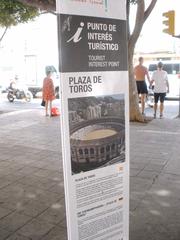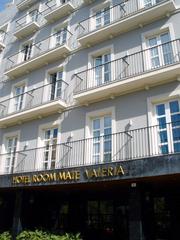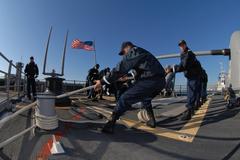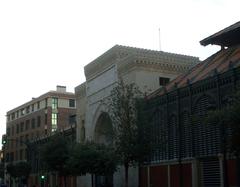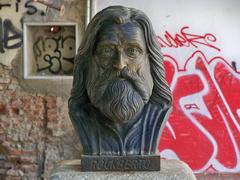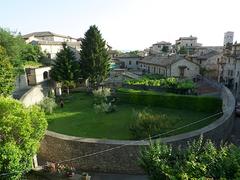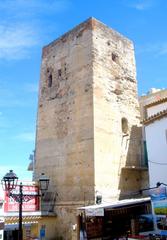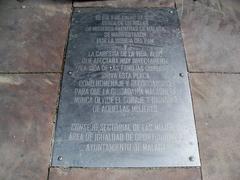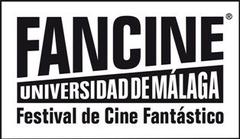Complete Guide to Visiting the Monument to Manuel González García in Málaga, Spain
Date: 14/06/2025
Introduction
The Monument to Manuel González García stands in Málaga’s historic center as a tribute to one of Spain’s most influential religious leaders. Known as the “Bishop of the Abandoned Tabernacle,” Manuel González García’s tireless devotion to the Eucharist and social causes left a profound mark on the city and the Catholic Church. This guide explores the monument’s historical and cultural significance, provides essential visitor information—including hours, accessibility, and travel tips—and offers practical advice to enrich your experience. For official information and further details, consult the Málaga Official Tourism Site and the Eucharistic Revival Biography.
Table of Contents
- Introduction
- About Manuel González García
- Historical Context and Ecclesiastical Impact
- Monument Structure, Artistic Features, and Symbolism
- Location and How to Get There
- Visiting Hours, Tickets, and Accessibility
- What to Expect
- Facilities and Amenities
- Guided Tours and Interpretation
- Special Events and Commemorations
- Nearby Attractions
- Visuals and Media
- Travel Tips
- Frequently Asked Questions (FAQ)
- Conclusion
- References
About Manuel González García
Born in Seville in 1877, Manuel González García was a Catholic bishop renowned for his deep Eucharistic devotion and advocacy for the marginalized. His tenure as Bishop of Málaga was characterized by spiritual renewal and robust social outreach. González García founded multiple religious organizations, including the Eucharistic Missionaries of Nazareth, and established schools and hospitals for Málaga’s most vulnerable communities. His legacy was recognized through beatification in 1964 and canonization by Pope Francis in 2016, with his feast day celebrated annually on January 4 (Catholic Saints Day).
Historical Context and Ecclesiastical Impact
Manuel González García’s episcopal leadership in Málaga coincided with periods of political turmoil, including the Spanish Civil War. Despite adversity, he championed the centrality of the Eucharist, promoted social justice, and fostered unity regardless of political or religious affiliation. His episcopal motto, “There is Jesus! Do not let him be abandoned!” reflects his enduring mission (NC Register).
He was instrumental in founding the Children of Reparation and the Disciples of Saint John, organizations focused on Eucharistic adoration and charitable works. González García’s initiatives laid the foundation for modern Catholic social services in Andalusia (seminario.diocesismalaga.es).
Monument Structure, Artistic Features, and Symbolism
Design and Materials:
The monument, unveiled on May 11, 1961, is a life-sized bronze statue created by acclaimed sculptor Víctor de los Ríos. It stands atop a robust limestone pedestal, harmonizing with Málaga’s historical architecture (es.wikipedia.org).
Pose and Symbolism:
Bishop González García is depicted in full episcopal regalia, extending his right hand in a gesture of welcome and holding a ciborium in his left, symbolizing Eucharistic devotion. Relief panels on the pedestal illustrate scenes from his ministry, and inscriptions highlight his title as “Apostle of the Eucharist.”
Integration with Surroundings:
Located in Plaza de San Pedro, near Málaga Cathedral and the Episcopal Palace, the monument faces the city’s religious heart. The open plaza and subtle lighting make it a focal point at all hours, inviting both reflection and community gatherings (Fascinating Spain).
Location and How to Get There
- Address: Plaza de San Pedro, Málaga, Spain
- Public Transport:
- Metro: Málaga Centro-Alameda station (Lines 1 and 2)
- Bus: EMT lines 1, 3, and 11 stop nearby
- By Car: Limited street parking; public garages at Plaza de la Marina
- On Foot: A short walk from Málaga Cathedral and the city center
Visiting Hours, Tickets, and Accessibility
- Visiting Hours: Open 24/7 as an outdoor public monument
- Admission: Free
- Accessibility: Wheelchair-friendly with smooth, paved pathways. The surrounding area is pedestrian and stroller accessible.
What to Expect
The monument’s serene atmosphere and central location make it ideal for contemplation, photography, and learning about one of Málaga’s most respected figures. Informational plaques provide historical context in both Spanish and English, making it accessible to international visitors. The site is often included in walking tours of Málaga’s religious and historical landmarks.
Facilities and Amenities
- Restrooms: Available in nearby cafés and public venues
- Seating: Benches and shaded areas in the adjacent plazas
- Wi-Fi: Offered in local cafés and public spaces
- Accessibility: The area features level surfaces and curb cuts for wheelchairs and strollers
Guided Tours and Interpretation
Many guided tours of Málaga’s historic center include the monument among other landmarks. These tours, available in multiple languages, provide expert commentary on the life of Manuel González García and his impact on the city. Self-guided tours and digital apps also offer rich interpretive content (Málaga Official Tourism Site).
Special Events and Commemorations
The monument serves as a focal point during religious events such as Semana Santa (Holy Week) and González García’s feast day on January 4. These occasions feature processions, liturgies, and increased visitation. Check local schedules for possible access restrictions during major celebrations.
Nearby Attractions
- Málaga Cathedral: Renaissance architecture, 5 minutes on foot
- Episcopal Palace: Adjacent to the cathedral
- Picasso Museum: Celebrating Málaga’s most famous artist
- Alcazaba Fortress and Roman Theatre: A short walk away
- Mercado Atarazanas: Traditional market with local delicacies
Visuals and Media
For the best photographs, visit during early morning or late afternoon when natural light enhances the bronze statue’s detail. The surrounding architecture provides excellent backdrops. Use alt tags like “Monument to Manuel González García in Málaga” for online sharing.
Virtual tours and maps are available through official tourism websites, offering interactive ways to plan your visit.
Travel Tips
- Best Time to Visit: Spring and autumn for pleasant weather and fewer crowds
- Dress Comfortably: Cobblestone streets require good walking shoes
- Bring Essentials: Water, sunscreen, and hats in summer
- Learn Basic Spanish: Helps with communication and cultural engagement
- Respect Religious Observance: Maintain a respectful demeanor, especially during liturgical events
Frequently Asked Questions (FAQ)
Q: Is there an entrance fee to visit the monument?
A: No, the monument is free and open to the public.
Q: What are the visiting hours?
A: The monument is accessible 24/7.
Q: Is the monument accessible for wheelchair users?
A: Yes, the area is wheelchair-friendly.
Q: Can I join guided tours that include the monument?
A: Yes, many walking tours of the historic center feature the monument.
Q: When is the best time for photography?
A: Early morning and late afternoon provide optimal lighting.
Q: Are there special events at the monument?
A: Yes, especially during Semana Santa and on González García’s feast day.
Conclusion
Visiting the Monument to Manuel González García is more than an encounter with an impressive bronze statue—it’s a journey into Málaga’s spiritual and social history. The monument’s prime location, open access, and thoughtful design make it a standout among Málaga’s historical sites. Enhance your visit by exploring nearby attractions, joining a guided tour, or attending a special event.
For enriched experiences and interactive tours, download the Audiala app and follow Málaga’s cultural updates on social media. Make the most of your journey by delving into the vibrant heritage surrounding this remarkable monument.
